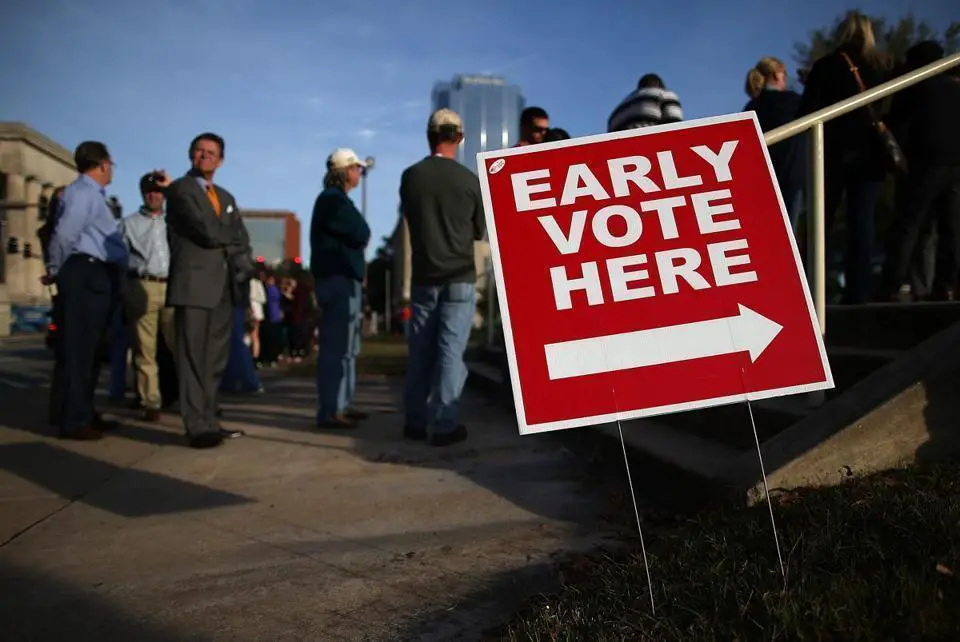For many jurisdictions around the country, this week marked the beginning of “early voting” which is voting that takes place before Election Day, November 6. Some states allow voting in person, the same as you would on Election Day, while others allow voting by mail. Either way, the early voting numbers are watched closely to see if they reveal trends or advantages for one party or the other. In most cases, the data is mixed, suggesting it’s hard to discern which party may be garnering an advantage during the early voting period. However, there are some pockets around the country where the numbers stick out and should be studied more closely.
Advantage: Republicans?
We’re all searching for the Democratic “blue wave,” but NBC News is reporting that their numbers, in several key battlegrounds, simply don’t support that narrative at the present time:
Republican-affiliated voters have outpaced Democratic-affiliated voters in early voting in seven closely watched states, according to data provided by TargetSmart and independently analyzed by the NBC News Data Analytics Lab.
GOP-affiliated voters have surpassed Democratic-affiliated ones in early voting in Arizona, Florida, Georgia, Indiana, Montana, Tennessee and Texas, the data showed.
Only in Nevada have Democratic-affiliated voters exceeded Republican-affiliated voters so far in early voting, according to the data.
…
Republicans typically dominate early voting by absentee ballots, while Democrats tend to have the advantage with in-person early voting. So, for example, the entire early voting picture in Florida, which has yet to begin in-person voting, is incomplete.
Clearly, Republicans have become motivated to vote in 2018 based on this data. The fear a few months ago was that the President’s party would become complacent, content with having just won the White House so why bother to show up for the Midterms? Take these numbers as a small data point, but the Republican National Committee leadership must be breathing a slight sigh of relief to see positive turnout in these important Senate battles.
Advantage: Democrats?
On the other hand, as Bloomberg reports, turnout usually benefits Democrats, and with the numbers skyrocketing around the country, that could be good news for the “blue wave”:
Early voting is under way or about to start in several states, and so far, turnout is up — way up.
That turnout could benefit Democrats, who are vying to take the House and have long-shot hope of flipping the Senate. The party has seen a surge in special elections throughout this year and last, and could see their highest level of voter turnout for a midterm election in at least a decade, according to an analysis by the New York Times.
In Indiana and Tennessee, states with competitive Senate races, and Minnesota, a state with four competitive House races that could help determine if Democrats are able to flip the chamber, turnout is surging. On Wednesday, the first day of early voting in Tennessee, more than 120,000 people voted, which is nearly four times the number of people that voted on the first day of early voting in 2014 midterm, according to the Tennessean. That state is home to a tight race between former Democratic Governor Phil Bredesen and Republican Representative Marsha Blackburn. Republicans hope to hold onto that seat as part of a firewall to protect their Senate majority.
In Hamilton County, Indiana, just north of Indianapolis, voters have cast ballots at a rate 10 times higher than four years ago and almost as high as during 2016 election, the Indianapolis Star reported.
The confusing thing about early voting numbers is that both parties can make a reasonable argument that it benefits their candidates.
Texas Off The Chart
In Texas, election authorities in some areas have seen record numbers in early voting, perhaps attributed to the closeness of the race or driven by voters eager to come support their candidate:
The state’s largest counties all saw much larger first-day turnout than they did in the previous midterm elections in 2014. Dallas County’s combined in person and mail-in votes topped out at 55,384 on Monday, almost 26,000 more than were cast in 2014, according to The Dallas Morning News.
In Bexar County, The San Antonio Express News reported that as of 4 p.m. Monday more than 24,000 people had voted in person, compared to 13,436 who voted in person first day in 2014.
Bruce Elfant, Travis County Tax Assessor-Collector and Voter Registrar, reported on Facebook Monday night in-person and mail-in votes for Travis County totaled 47,405, compared to 17,181 first-day in-person and mail-in votes in 2014.
Smaller counties also saw big turnout. Midland County Election Administrator Deborah Land said out of 84,945 registered voters in her county, 3,546 had voted by 4 p.m. Monday — compared to just 756 who voted the first day in 2014.
“We had a line at the elections office all day,” Land said. “Most of the time it was extending down the hallway.”
Democrats believe that these numbers are being driven by Beto O’Rourke and the passion that he has ignited in the Lonestar State. Republicans are countering that narrative believing that Ted Cruz will ultimately prevail, and early voting doesn’t necessarily benefit either side.
Bottom Line
Voters are motivated, that is the lesson. It’s not too surprising to see the early voting numbers climb year by year. States are going out of their way to advertise early voting as a way to avoid long lines on Election Day. It would appear that more and more voters are starting to become comfortable with early voting and may be taking advantage of it, especially if they want to avoid headaches often associated with busy urban districts.
Donate Now to Support Election Central
- Help defend independent journalism
- Directly support this website and our efforts
